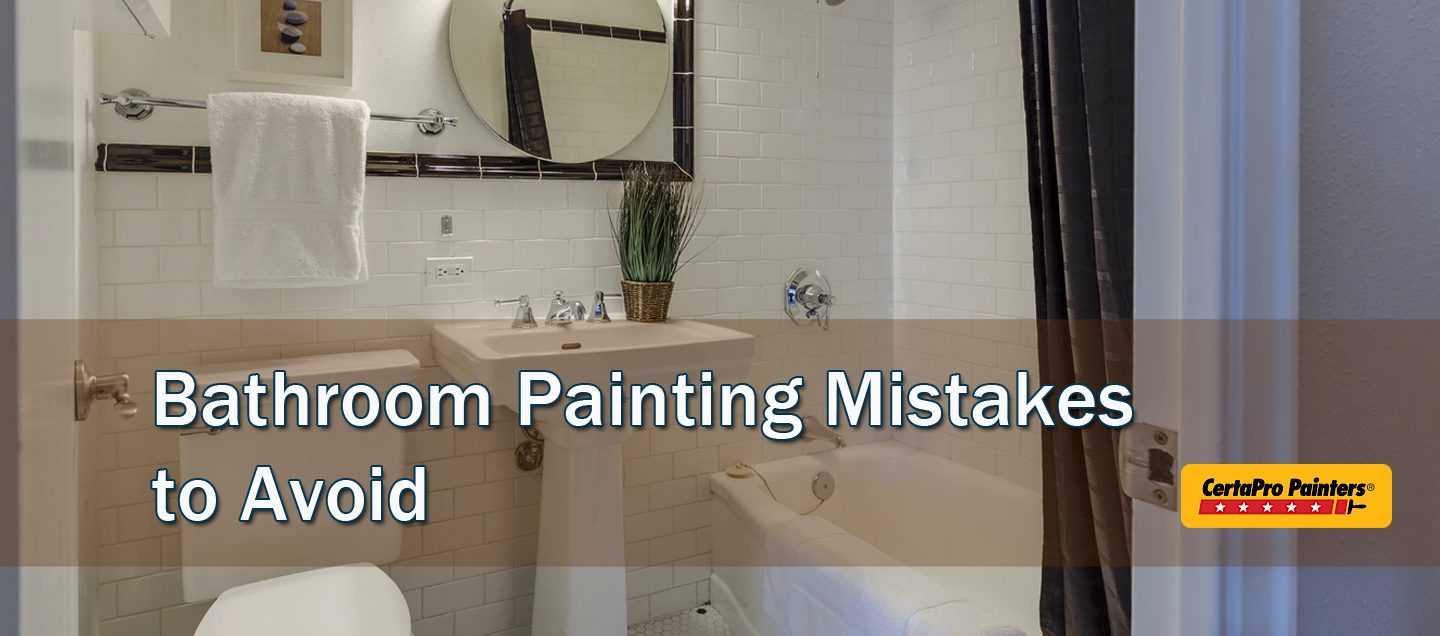
9 Bathroom Painting Mistakes to Avoid
Posted on December 18, 2019
When it comes to interior painting projects a bathroom can often be a complicated room to paint. The humidity of the room and the tight space most bathrooms are known for can make painting them worse than you might expect.
Our pros weigh in on common mistakes to avoid when painting a bathroom.
1. Not preparing the area
Professional painters say your prep work should be twice as long as the paint time. Taking the time to tape the pipes and counters will make a big difference in both the painting time and the outcome of the project. Take some time to remove wall plates, wrap doorknobs, and tape off the tile. You’ll be glad you did when you are trying to work paint behind the toilet tank and shimmy around inside showers.
2. Buying the wrong paint
There are few rooms in your home that are as wet as often as the bathroom. The humidity of a shower, the steam of a shave, it all adds to the same outcome: water on the walls. Protect your paint job by choosing paint in eggshell or gloss finish to protect the paint. The sheen added by the finish will act as a layer of armor on your walls over the paint.
3. Skimping on paint
No one wants to stop their job mid-project to go get more paint. Even with the most precise computer tools you can’t make the new color exactly match the old. It’s easier to over-buy and make one big batch. A gallon of paint will usually cover about 400 square feet. Use that number to work out what you need, and get extra.
4. Not washing the walls
You would be shocked how much grime and dust is sitting on your walls. There is much more to clean than a rogue speck of toothpaste. Start with a vacuum to pull dust down, then get a good degreaser to wipe the walls. You can make your own by mixing one gallon of warm water with two cups of vinegar. Sponge down the walls from top to bottom, making sure to include tight corners and baseboards.
5. Neglecting painter’s tape
The industry standard used to be masking tape to give you straight edges to paint along. Since painter’s tape hit the market, home improvement professionals can’t get enough. Press the edges down with a putty knife to ensure clean lines. Be careful not to overload the tape with paint to avoid bleeding through. Some pros suggest using a box cutter along the edge of the tape before peeling it up – once dry – to keep the paint film intact.
6. Getting cheap tools
Although cheap tools can be tempting to buy, the reality is that the end result will look like it was done with cheap tools. Match your brushes to the paint and job. For latex, get synthetic bristles. For oil-based paints, you need a natural brush.
7. Buying paint that’s on sale
Rarely is there a sale so good it makes cheap paint worth it. One thing you need to know is what kind of paint you are layering over because the new paint should match the old. If it’s latex, get latex. The same goes for oil paints. Mixing the style of paint will lead to cracking and peeling on your walls, and you don’t want that.
8. Don’t skip priming
Especially in bathrooms full of wet and humidity, priming the walls is crucial. The primer will not only give you an even, blank surface to paint, but it also provides a tooth for the new paint color to stick to. Without a primed wall, your new paint could peel off almost as fast as you put it up.
9. Rushing a second coat
Your paint needs time to set and dry. If you try to rush into your second coat, you could pull up the first layer of paint and cause holidays, streaks, and other maladies in your job. You must make sure your paint is completely dried. If you are unsure how long this takes, give it 24 hours before you start again.
Need some help with your bathroom painting project? We’re here for you! Call today at 760-579-8594 or schedule online for a free, in-home estimate.






